Chain Roop Bhansali Scam (The CRB Scam)
Indian stock market had witnessed a lot of scam till now, and out of them, stood another big scam worth 1200 crores, executed by a middle class trader and Chartered Accountant Chain Roop BHansali. This CRB Scam of 1996 is considered to be the biggest Mutual Fund Scam India ever witnessed.
About Chain Roop Bhansali
Bhansali had his roots in Sujangarh, Rajasthan and later moved to Kolkata and was raised there.
He belonged to a middle class jute trader family. He completed his Bachelors in Commerce and in the year 1980 he completed his Chartered Accountancy. During this time of his career he opened his own financial consultancy firm named CRB Consultancy. He was quick in getting business opportunities through his contacts he had with people in different fields. He used to provide issue management services to companies in Kolkata.
Over the years, Bhansali acquired other degrees as well including ACS, Ph.D., MIIA (US) and a Diploma in Journalism. Though he made a lot of money, Bhansali found it difficult to find recognition in Kolkata. So he moved to New Delhi to join one of the country’s leading registrars of companies. However, when Bhansali was caught short-charging the registrar’s clients, he had to leave.
The Scam
Bhansali established ‘CRB Consultants,’ a private limited company in New Delhi in 1985 and in 1992, the name of the company was changed to CRB Capital Markets (CRB Caps) and it was converted into a public limited company. He then established CRB Mutual Fund (Mutual Fund) in 1994 and CRB Share Custodial services in 1995. He also established 133 unlisted companies and subsidiaries, and most of his transactions were made using these dummy companies which never existed.
Since there was a boom in the Non-Banking Finance Company (NBFC) sector in the 90s, it acted as a catalyst for the Ponzi schemes, and Bhansali took good advantage of such schemes to execute his fraud. The Ponzi schemes were the fraud schemes that lured investors and paid profits to earlier investors with funds collected from the recent investors. The scheme leads victims to believe that profits are coming from genuine business activity, and they remain unaware that other investors are the source of funds for these schemes. And the CR Bhansali Scam became the first ever Indian scam based on this type of scheme.
The CRB Capital Markets offered various services including merchant banking, leasing, hire and purchase, bill discounting and corporate funds management, fixed deposit and resources mobilization, mutual funds and asset management, international finance and forex operations. CRB Caps was also very active in stock-broking, having a card both on the BSE and the NSE. Chain Roop Bhansali was in his best phase of business during the period between 1992 to 1996 where he collected money from the public, through fixed deposits, bonds and debentures.
Most of the money was transferred to the dummy companies and subsidiaries which he created for executing the fraud. His flagship company, CRB Capital Markets, raised a record Rs 176 crore in three years. In 1994 the CRB Mutual Funds launched a closed ended scheme, Arihant Mangal Growth Scheme, which was planned to mature in 1999 and raised Rs 230 crore from thousands of investors. Another Rs 180 crore came through fixed deposits. The CRB Corporation Ltd raised Rs 84 core through three public issues between May 1993 and December 1995. And the CRB Share Custodial Services raised a further Rs 100 crore in January 1995 to set up operations.
Between 1992 and 1995, when the market was in the post Harshad Mehta bear phase, Bhansali managed to raise close to Rs 900 crore and transferred it to his non-existing companies. No one ever understood his intentions as he always had a good reputation. He was ruling as a financial expert during these years and was collecting huge money from the public through fixed deposits, bonds and debentures.
His companies were rated AAA by CARE and an upfront cash of 7 – 10% attracted investors as holders to Bhansali’s scheme. He always maintained a good relationship with religious leaders and political party leaders, who favored him bringing investors and customers.
Bhansali used his own money to rig share prices in order to raise more money from the markets. He did that by buying his own stock through private finance companies owned by him. And he also used his other public companies to buy into each other as cross-holdings. Both the CRB Capital Markets and CRB Share Custodian Services featured in the list of top 10 companies in which CRB Mutual Funds invested in 1994-95.
To elaborate, the CRB Share Custodian invested Rs 15 crore into CRB Capital Markets, which in turn invested Rs 17 crore in CRB Mutual Funds. The latter held 24 lakh shares of CRB Corporation, which again had a Rs16 crore investment in CRB Capital Markets.
By such activities, Bhansali managed to keep the share prices of CRB companies artificially inflated and raised and he was able to post profits for group companies. It was revealed and believed that Bhansali invested in three classes of companies, his own privately owned companies, private companies owned by his friends and the board members of his companies, and many small companies whose issues were managed by CRB Capital. Many of these companies were the ones Bhansali invested in to generate paper profits for the group.
Generally, Bhansali bought IPOs of companies at a much lower price than the issue price and hence entered a deal with the company. As per the deals, Bhansali sold the holdings at a higher price, promising to buy it back after a year’s time at higher price. The money generated thus was shown as profits in the books of CRB Caps or CRB Corporation as profits from sale of investment.
This procedure was repeated over and over again, keeping the books of the companies artificially inflated. The huge profits always helped him keeping his share price high and also helped him get more money from the public. Since the company managed to get higher credit ratings, it ensured a steady fixed deposit and bank credit inflow. These actions and deeds were made possible with the help of Bhansali’s trusted firms of auditors.
During these three years, Bhansali’s net worth of CRB Capital Markets moved from Rs 2 crore in 1992 to Rs 430 crore in 1996. Surely, this was the signal for the RBI, but it did not read it correctly. The RBI also considered his application for a bank licence. It was during that time, when Bhansali was borrowing in business, raising deposits at between 24% and 32% a year, the rates which no legitimate business can sustain.
It was very clear and obvious from his deeds that Bhansali wanted a bank licence. To be issued a licence, Bhansali needed a capital of Rs 100 crore, and the exercise was aimed at raising that amount, whatever it took, including the SBI fraud. The State Bank of India incident included that between March 1 and April 9, he duped SBI Mumbai branch of Rs 59 crore by issuing fraudulent dividend warrants and encashing them. He managed this by using fake accounts in Chennai, Kolkata and Rajasthan branch. SBI later accused him of printing 1800 fake dividend warrants and encashing them.
The Scam Expose and Aftermath
Since Bhansali was in constant pressure to pay the returns (on the investor’s investment) which were not possible with the high rates, he simply started raising more money to pay interest on investment and, in some cases, the principle by borrowing from the market. It took a toll on all his financial institutions when there was a stock market crash in 1995, and he swindled nearly an amount of 1200 crores.
In 1995, it was found that only Rs 6 Cr came from retail investors and the rest amount of 224 Cr was collected from his dummy companies and reinvested in the same companies’ shares. Since he was completely trapped financially and thus in a hurry-burry, he tried borrowing money from the market, to repay the interest rate on the amounts he borrowed. He was later forced to borrow once again and this went on and on, and he got stuck in a financial quicksand.
He was so determined to get out of the trap that he even tried out investing in some high risk ventures. Bhansali was then so devastated and disturbed that he even tried financing a Hindi movie, but the gamble failed.
The trapped Bhansali, even tried out borrowing funds from the banks through all questionable means. All was going well till December 1996, when the Reserve Bank of India (RBI) refused banking status to CRB and contemplated action for the irregularities in his business.
Pradip Bhavnani, President of National Association of Small Investors, said: ‘‘There was a lot of confusion about how to act against CRB, considering its NBFC status. When he started defaulting, public sector banks like the State Bank of India were the first to be hit. Had the SEBI and RBI acted fast, investors wouldn’t have lost money.’’
Bhansali was courageous enough to escape SEBI’s eye and claim RBI clearance for the bank even after it was rejected by SEBI. RBI had no explanation as to how it could have even considered issuing an in-principle licence for a bank to an unregistered finance company like CRB, when even applications by Reliance, Essar and the AV Birla Group were being rejected. The collapse of the CRB group seemed to be a fraud allowed by supervisors despite the regulations in place. The lack of clear communication channels between the banks, RBI and the government seemed to have worked to Bhansali’s advantage to a great extent.
But things could not hide longer from the media and it came to light in 1996 where CRB group was highlighted for committing fraudulent activities, cheating and siphoning off funds from SBI and others. Hence an FIR was filed against Bhansali as per section 420 of the Indian Penal Court and section 13(1)D and 13(2) of the Corruption Act. During this time he cleverly transferred investor’s money and raised it to 1200 crores by his fraudulent schemes.
He was then banned from launching new schemes. CRB Mutual Fund was suspended from doing business. Plus, an already given in-principle approval from RBI to set up a bank in Bhubaneswar was also withdrawn after the inspections revealed the group was misusing funds. CRB Group failed and C R Bhansali spent a few months in jail in 1997.
RBI gave Bhansali 72 hours to come up with a plan to repay his liabilities following over 400 complaints from depositors in his company’s financial schemes. Most top officials of Bhansali were untraceable. The Central Bureau of Investigation (CBI) locked and sealed the offices of the CRB Group and arrested six persons, including four directors (two from Bikaner and two from Mumbai) of the satellite companies of the group, a financial controller in Mumbai and a relative and close associate of Bhansali in Delhi. The CBI also conducted simultaneous searches at 16 places in Mumbai, three in New Delhi, one each in Chennai and Ahmedabad and two places each in Calcutta, Jhunjunu, Sujangarh and Bikaner.
The CBI froze all the bank accounts of the group companies and seized incriminating files and other documents from the residence of the vice-president of the CRB group in Mumbai. Later rumours were that Bhansali flew to Hong Kong with wife, children, parents and sister.
He was arrested at the Delhi Airport but his family and wife were allowed to go. . RBI then filed a winding-up petition claiming that the continuance of the CRB Group was not in the interest of the public and depositors. The order prohibited CRB from selling, transferring, mortgaging or dealing in any manner with its assets and from accepting public deposits.
The government later asked the RBI to prepare a panel of auditors asking to explore the possibility of making auditing of NBFCs a prerequisite to registration. The CBI also registered a case against few of the officials of the SBI who cheated the bank with Bhansali.
This scam shattered thousands of investors’ dreams, and led to a loss of hard earned investors’ money. Around 20,000 investors finally hoped to get back some of their money when the Delhi high court set up a 3-member special committee to ensure termination of the scheme & repayment to unit holders. Unit holders of CRB Mutual Fund – Arihant Mangal Scheme were invited to contact the Registrar & Transfer Agency with necessary documents for redemption of their units. The investors were paid back at a provisional NAV of Rs. 6.48 per unit almost 20 years after they bought units of the doomed Arihant Mangal Scheme.
In his later years he shifted to Ghaziabad, and became the Chairman of Vidya Bharti School, where again he was exposed by the RTI of dominance and torture to the teachers and management of the school. These kinds of scams opened the eyes of the investors and the regulatory authorities. As once mentioned by Vinod Baid, promoter, Prudential Capital Markets, “Few people realize it but the CRB collapse has done a great deal of good to the country. It has stopped investors from seeing ads and feeding money into the fixed deposit whirlpool”.
Howdy!
If you’re here for the first time, let’s get introduced.
VRD Nation is India’s premier stock market training institute and we (Team VRD Nation) are passionate about teaching each and every aspect of investing and trading.
If you’re here for the first time, don’t forget to check out “Free Training” section where we have tons of free videos and articles to kick start your stock market journey.
Also, we got two awesome YouTube channels where you can continue the learning process.
Must-Read Articles
Chain Roop Bhansali Scam (The CRB Scam)
Indian stock market had witnessed a lot of scam till now, and out of them, stood another big scam worth 1200 crores, executed by a middle class trader and Chartered Accountant Chain Roop BHansali. This CRB Scam of 1996 is considered to be the biggest Mutual Fund Scam India ever witnessed.
About Chain Roop Bhansali
Bhansali had his roots in Sujangarh, Rajasthan and later moved to Kolkata and was raised there.
He belonged to a middle class jute trader family. He completed his Bachelors in Commerce and in the year 1980 he completed his Chartered Accountancy. During this time of his career he opened his own financial consultancy firm named CRB Consultancy. He was quick in getting business opportunities through his contacts he had with people in different fields. He used to provide issue management services to companies in Kolkata.
Over the years, Bhansali acquired other degrees as well including ACS, Ph.D., MIIA (US) and a Diploma in Journalism. Though he made a lot of money, Bhansali found it difficult to find recognition in Kolkata. So he moved to New Delhi to join one of the country’s leading registrars of companies. However, when Bhansali was caught short-charging the registrar’s clients, he had to leave.
The Scam
Bhansali established ‘CRB Consultants,’ a private limited company in New Delhi in 1985 and in 1992, the name of the company was changed to CRB Capital Markets (CRB Caps) and it was converted into a public limited company. He then established CRB Mutual Fund (Mutual Fund) in 1994 and CRB Share Custodial services in 1995. He also established 133 unlisted companies and subsidiaries, and most of his transactions were made using these dummy companies which never existed.
Since there was a boom in the Non-Banking Finance Company (NBFC) sector in the 90s, it acted as a catalyst for the Ponzi schemes, and Bhansali took good advantage of such schemes to execute his fraud. The Ponzi schemes were the fraud schemes that lured investors and paid profits to earlier investors with funds collected from the recent investors. The scheme leads victims to believe that profits are coming from genuine business activity, and they remain unaware that other investors are the source of funds for these schemes. And the CR Bhansali Scam became the first ever Indian scam based on this type of scheme.
The CRB Capital Markets offered various services including merchant banking, leasing, hire and purchase, bill discounting and corporate funds management, fixed deposit and resources mobilization, mutual funds and asset management, international finance and forex operations. CRB Caps was also very active in stock-broking, having a card both on the BSE and the NSE. Chain Roop Bhansali was in his best phase of business during the period between 1992 to 1996 where he collected money from the public, through fixed deposits, bonds and debentures.
Most of the money was transferred to the dummy companies and subsidiaries which he created for executing the fraud. His flagship company, CRB Capital Markets, raised a record Rs 176 crore in three years. In 1994 the CRB Mutual Funds launched a closed ended scheme, Arihant Mangal Growth Scheme, which was planned to mature in 1999 and raised Rs 230 crore from thousands of investors. Another Rs 180 crore came through fixed deposits. The CRB Corporation Ltd raised Rs 84 core through three public issues between May 1993 and December 1995. And the CRB Share Custodial Services raised a further Rs 100 crore in January 1995 to set up operations.
Between 1992 and 1995, when the market was in the post Harshad Mehta bear phase, Bhansali managed to raise close to Rs 900 crore and transferred it to his non-existing companies. No one ever understood his intentions as he always had a good reputation. He was ruling as a financial expert during these years and was collecting huge money from the public through fixed deposits, bonds and debentures.
His companies were rated AAA by CARE and an upfront cash of 7 – 10% attracted investors as holders to Bhansali’s scheme. He always maintained a good relationship with religious leaders and political party leaders, who favored him bringing investors and customers.
Bhansali used his own money to rig share prices in order to raise more money from the markets. He did that by buying his own stock through private finance companies owned by him. And he also used his other public companies to buy into each other as cross-holdings. Both the CRB Capital Markets and CRB Share Custodian Services featured in the list of top 10 companies in which CRB Mutual Funds invested in 1994-95.
To elaborate, the CRB Share Custodian invested Rs 15 crore into CRB Capital Markets, which in turn invested Rs 17 crore in CRB Mutual Funds. The latter held 24 lakh shares of CRB Corporation, which again had a Rs16 crore investment in CRB Capital Markets.
By such activities, Bhansali managed to keep the share prices of CRB companies artificially inflated and raised and he was able to post profits for group companies. It was revealed and believed that Bhansali invested in three classes of companies, his own privately owned companies, private companies owned by his friends and the board members of his companies, and many small companies whose issues were managed by CRB Capital. Many of these companies were the ones Bhansali invested in to generate paper profits for the group.
Generally, Bhansali bought IPOs of companies at a much lower price than the issue price and hence entered a deal with the company. As per the deals, Bhansali sold the holdings at a higher price, promising to buy it back after a year’s time at higher price. The money generated thus was shown as profits in the books of CRB Caps or CRB Corporation as profits from sale of investment.
This procedure was repeated over and over again, keeping the books of the companies artificially inflated. The huge profits always helped him keeping his share price high and also helped him get more money from the public. Since the company managed to get higher credit ratings, it ensured a steady fixed deposit and bank credit inflow. These actions and deeds were made possible with the help of Bhansali’s trusted firms of auditors.
During these three years, Bhansali’s net worth of CRB Capital Markets moved from Rs 2 crore in 1992 to Rs 430 crore in 1996. Surely, this was the signal for the RBI, but it did not read it correctly. The RBI also considered his application for a bank licence. It was during that time, when Bhansali was borrowing in business, raising deposits at between 24% and 32% a year, the rates which no legitimate business can sustain.
It was very clear and obvious from his deeds that Bhansali wanted a bank licence. To be issued a licence, Bhansali needed a capital of Rs 100 crore, and the exercise was aimed at raising that amount, whatever it took, including the SBI fraud. The State Bank of India incident included that between March 1 and April 9, he duped SBI Mumbai branch of Rs 59 crore by issuing fraudulent dividend warrants and encashing them. He managed this by using fake accounts in Chennai, Kolkata and Rajasthan branch. SBI later accused him of printing 1800 fake dividend warrants and encashing them.
The Scam Expose and Aftermath
Since Bhansali was in constant pressure to pay the returns (on the investor’s investment) which were not possible with the high rates, he simply started raising more money to pay interest on investment and, in some cases, the principle by borrowing from the market. It took a toll on all his financial institutions when there was a stock market crash in 1995, and he swindled nearly an amount of 1200 crores.
In 1995, it was found that only Rs 6 Cr came from retail investors and the rest amount of 224 Cr was collected from his dummy companies and reinvested in the same companies’ shares. Since he was completely trapped financially and thus in a hurry-burry, he tried borrowing money from the market, to repay the interest rate on the amounts he borrowed. He was later forced to borrow once again and this went on and on, and he got stuck in a financial quicksand.
He was so determined to get out of the trap that he even tried out investing in some high risk ventures. Bhansali was then so devastated and disturbed that he even tried financing a Hindi movie, but the gamble failed.
The trapped Bhansali, even tried out borrowing funds from the banks through all questionable means. All was going well till December 1996, when the Reserve Bank of India (RBI) refused banking status to CRB and contemplated action for the irregularities in his business.
Pradip Bhavnani, President of National Association of Small Investors, said: ‘‘There was a lot of confusion about how to act against CRB, considering its NBFC status. When he started defaulting, public sector banks like the State Bank of India were the first to be hit. Had the SEBI and RBI acted fast, investors wouldn’t have lost money.’’
Bhansali was courageous enough to escape SEBI’s eye and claim RBI clearance for the bank even after it was rejected by SEBI. RBI had no explanation as to how it could have even considered issuing an in-principle licence for a bank to an unregistered finance company like CRB, when even applications by Reliance, Essar and the AV Birla Group were being rejected. The collapse of the CRB group seemed to be a fraud allowed by supervisors despite the regulations in place. The lack of clear communication channels between the banks, RBI and the government seemed to have worked to Bhansali’s advantage to a great extent.
But things could not hide longer from the media and it came to light in 1996 where CRB group was highlighted for committing fraudulent activities, cheating and siphoning off funds from SBI and others. Hence an FIR was filed against Bhansali as per section 420 of the Indian Penal Court and section 13(1)D and 13(2) of the Corruption Act. During this time he cleverly transferred investor’s money and raised it to 1200 crores by his fraudulent schemes.
He was then banned from launching new schemes. CRB Mutual Fund was suspended from doing business. Plus, an already given in-principle approval from RBI to set up a bank in Bhubaneswar was also withdrawn after the inspections revealed the group was misusing funds. CRB Group failed and C R Bhansali spent a few months in jail in 1997.
RBI gave Bhansali 72 hours to come up with a plan to repay his liabilities following over 400 complaints from depositors in his company’s financial schemes. Most top officials of Bhansali were untraceable. The Central Bureau of Investigation (CBI) locked and sealed the offices of the CRB Group and arrested six persons, including four directors (two from Bikaner and two from Mumbai) of the satellite companies of the group, a financial controller in Mumbai and a relative and close associate of Bhansali in Delhi. The CBI also conducted simultaneous searches at 16 places in Mumbai, three in New Delhi, one each in Chennai and Ahmedabad and two places each in Calcutta, Jhunjunu, Sujangarh and Bikaner.
The CBI froze all the bank accounts of the group companies and seized incriminating files and other documents from the residence of the vice-president of the CRB group in Mumbai. Later rumours were that Bhansali flew to Hong Kong with wife, children, parents and sister.
He was arrested at the Delhi Airport but his family and wife were allowed to go. . RBI then filed a winding-up petition claiming that the continuance of the CRB Group was not in the interest of the public and depositors. The order prohibited CRB from selling, transferring, mortgaging or dealing in any manner with its assets and from accepting public deposits.
The government later asked the RBI to prepare a panel of auditors asking to explore the possibility of making auditing of NBFCs a prerequisite to registration. The CBI also registered a case against few of the officials of the SBI who cheated the bank with Bhansali.
This scam shattered thousands of investors’ dreams, and led to a loss of hard earned investors’ money. Around 20,000 investors finally hoped to get back some of their money when the Delhi high court set up a 3-member special committee to ensure termination of the scheme & repayment to unit holders. Unit holders of CRB Mutual Fund – Arihant Mangal Scheme were invited to contact the Registrar & Transfer Agency with necessary documents for redemption of their units. The investors were paid back at a provisional NAV of Rs. 6.48 per unit almost 20 years after they bought units of the doomed Arihant Mangal Scheme.
In his later years he shifted to Ghaziabad, and became the Chairman of Vidya Bharti School, where again he was exposed by the RTI of dominance and torture to the teachers and management of the school. These kinds of scams opened the eyes of the investors and the regulatory authorities. As once mentioned by Vinod Baid, promoter, Prudential Capital Markets, “Few people realize it but the CRB collapse has done a great deal of good to the country. It has stopped investors from seeing ads and feeding money into the fixed deposit whirlpool”.














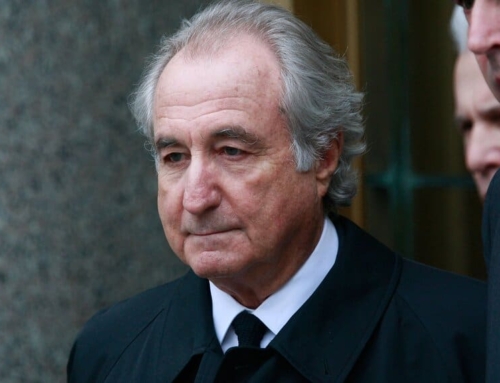
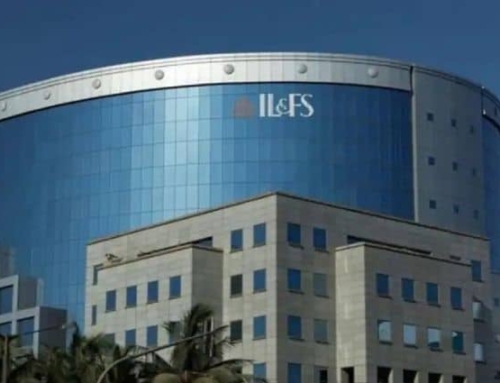
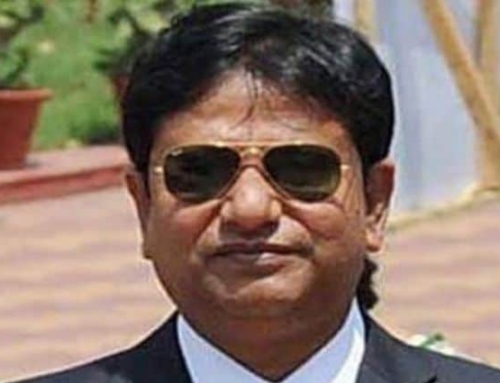
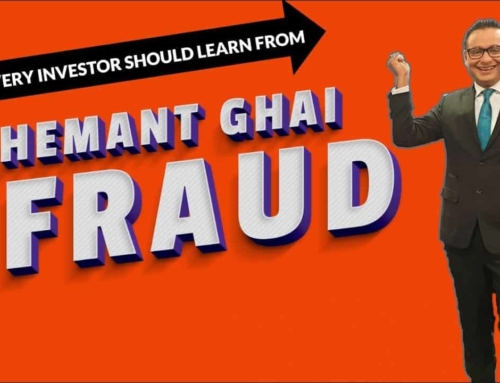
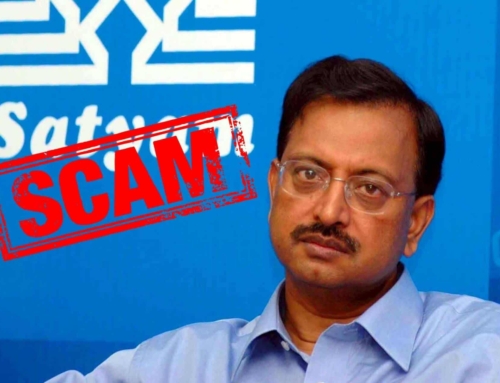

Leave A Comment